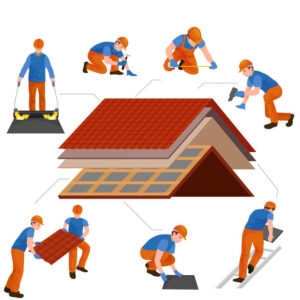- The condition of the cover materials – Depending on the materials you roof is made of, look for the specific problem: damaged, curled, cracked or missing shingles, perforations, dents, etc.
- Any accumulation of leaves, twigs and other debris, deep enough to retain moisture on the roof, will need to be removed. Residues not only retain moisture but also interrupt the proper water drainage by blocking gutters causing unreasonable stress on the roof due to their weight.
- Moss should not be allowed to grow on a roof, because its roots may penetrate under the shingles and move them from their normal position.
- Mold, algae and fungi – Look for black streaks or spots on the roof. Carefully check the northern and shady areas. Over time, these factors can erode the roofing material and cause damage and water leaks.
- The condition of the accessories on the roof. Damaged or missing accessories can allow water infiltration, degradation and risk of corrosion.
- Damaged flashing must be replaced immediately.
- The edges of the roof. Corrosion of the edges, uneven discoloration, exfoliation, cracks or local scratches are signs that the protective layer needs to be repaired.
- The rainwater drainage system – gutters and downspouts must be checked every season and cleaned whenever necessary.
- Attic windows
- Ventilation openings
To avoid escalation of the above problems, call well known roofing companies in Houston, like State Roofing, for annual roofing inspections and needed repairs.
